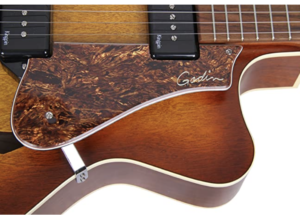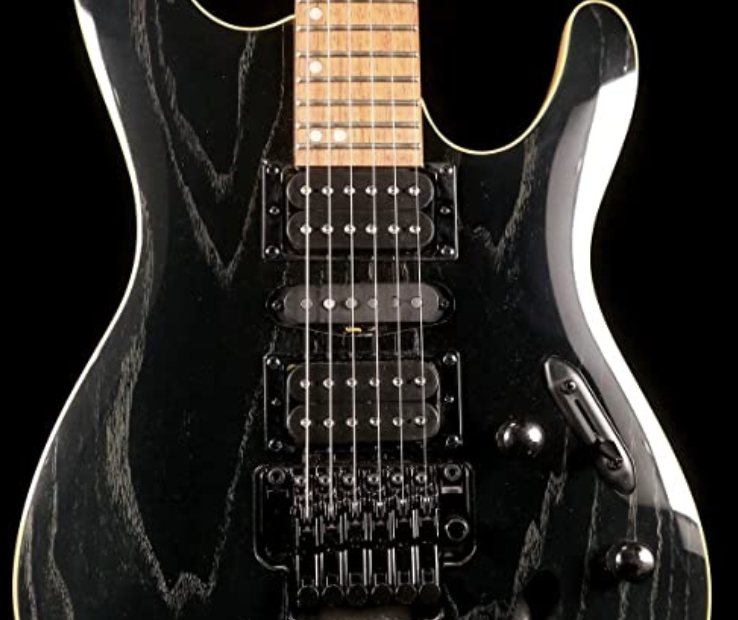 Playing the guitar can be a joy due to the large number of songs available for the instruments. Would you like to become a guitar player? Lots of people would, just like being a rock start is part of the dreams for a lot of people.
Playing the guitar can be a joy due to the large number of songs available for the instruments. Would you like to become a guitar player? Lots of people would, just like being a rock start is part of the dreams for a lot of people.
But to make progress as a guitar player you need to exercise daily. It is not possible to become a good guitar player without a good dose of motivation and without practice. The skills needed to play guitar well can be improved only with daily practice and the proper attention to exercises.
Beginning guitar players are always in the look for the best guitar exercises: the one that will help gaining dexterity, and at the same time improving rhythm and musicality. The good news is that there are exercises that will provide you with this important foundation for your future musical work.
Finding the Best Guitar Exercises
The real answer is to find exercises that help you improve in more than one area at the same time. These are the most complete guitar practices, that can make the difference between masters and mediocre players.
An important set of exercises is meant to improve dexterity. You should be able to move your fingers independently in the keyboard. Make sure that you spend time some of these drills that will help you play any note in any combination.
Read Also:
Unlock Your Musical Potential with Easy Guitar Lessons
4 Secrets to Survive the Beginner Guitar Lessons
How To Find Easy Guitar Lessons
6 Best Delay Pedals for Guitar
12 Great Tips on Sight Reading for Guitar
Training Different Positions in the Neck
 The importance of training notes in different positions cannot be stressed enough. If you don’t have this practice, it becomes difficult to move from one note to another, or between chords. This will show up in your performances, because it is necessary to use different chord positions when necessary.
The importance of training notes in different positions cannot be stressed enough. If you don’t have this practice, it becomes difficult to move from one note to another, or between chords. This will show up in your performances, because it is necessary to use different chord positions when necessary.
To solve this issue, practice each chord in many different positions. Due to the way the guitar is built, there are many different ways to play the same chord. This is one advantage for the good guitar player, but it also means that you need to learn and practice more chord combinations.
Playing in Different Keys
The good thing is that practicing this skill is easy if you have a good set of songs to practice. The combinations occur naturally, and you will have the opportunity to practice them as they appear. As you increase your repertoire, and practice it daily, you will see dramatic improvements in the way you move around in the guitar.
Another important exercise is to play the same songs in different keys. For example, it a sing is in A, try to play the same song in E or in C#, for example.
When doing this kind of exercise, even though the song is still the same, the fact that you can play it in another key will make you practice some parts of the instrument that you probably didn’t have an opportunity yet. This is even more true for more some uncommon keys, such as F# or A flat. Try all of them until you are sure about how to play with confidence.
Additional Best Guitar Exercises
 Here are some additional guitar exercises that can help improve your playing technique, dexterity, and overall musicality. Here are some of the best exercises to consider:
Here are some additional guitar exercises that can help improve your playing technique, dexterity, and overall musicality. Here are some of the best exercises to consider:
- Scale and Arpeggio Practice: Practicing scales and arpeggios is essential for developing finger strength, coordination, and musical understanding. Start with the major and minor scales, and gradually expand to other scales and modes. Practice ascending and descending patterns, and focus on accuracy, speed, and smooth transitions between notes.
- Finger Independence Exercises: Work on exercises that target finger independence and coordination. This can include exercises like finger stretching, spider exercises (playing notes on adjacent strings with different fingers), and fingerpicking patterns. These exercises help strengthen your fingers and improve your ability to play complex chord voicings and intricate melodies.
- Chord Progression Practice: Practice playing different chord progressions in various keys. This helps you develop muscle memory, improve your fretting hand technique, and enhance your ability to switch between chords smoothly. Start with simple progressions and gradually progress to more complex ones.
- Rhythm and Strumming Exercises: Work on your rhythm and strumming techniques by practicing different strumming patterns, rhythmic subdivisions, and accent patterns. This will improve your sense of timing, groove, and overall rhythmicality. Experiment with different genres and styles to broaden your rhythmic vocabulary.
- Technique-Building Exercises: Incorporate exercises that focus on specific guitar techniques such as alternate picking, sweep picking, legato, bending, vibrato, and tapping. These exercises help improve your speed, accuracy, and control over the instrument.
- Ear Training Exercises: Dedicate time to ear training exercises, which involve learning to recognize and play melodies, intervals, and chords by ear. This will enhance your ability to play by ear, improvise, and understand the music you’re playing on a deeper level.
- Sight-Reading Practice: Develop your sight-reading skills by regularly practicing reading and playing music from sheet music or guitar tablature. Start with simple pieces and gradually progress to more complex ones. This exercise will improve your ability to read and interpret music on the spot.
- Improvisation and Jamming: Set aside time for improvisation and jamming sessions. This allows you to explore your creativity, develop your own musical ideas, and improve your ability to play in different musical contexts. Play along with backing tracks, jam with other musicians, or experiment with different chord progressions to enhance your improvisational skills.
Remember to practice consistently and gradually increase the difficulty level as you progress. Focus on proper technique, take breaks when needed, and most importantly, enjoy the process of learning and improving your guitar playing.
Technique-Building Exercises
 There are several technique-building exercises that can help you improve your guitar playing skills. Here are some examples:
There are several technique-building exercises that can help you improve your guitar playing skills. Here are some examples:
- Alternate Picking Exercises: Alternate picking is an important technique that involves using both the downstroke and upstroke of the pick to play notes. Practice playing scales, arpeggios, and patterns using alternate picking, starting slowly and gradually increasing the speed. Focus on maintaining evenness and clarity of the notes.
- Sweep Picking Exercises: Sweep picking is a technique used to play arpeggios smoothly and quickly by using a sweeping motion with the pick across the strings. Start with simple three-string arpeggios and gradually progress to more complex shapes. Practice slowly at first, paying attention to synchronizing your picking hand with your fretting hand.
- Legato Exercises: Legato playing involves using hammer-ons and pull-offs to create smooth and connected notes. Practice playing scales, patterns, and licks using legato technique. Focus on producing clear and even notes, and work on increasing your speed and fluidity.
- Bending Exercises: Bending is a technique used to change the pitch of a note by pushing or pulling the string. Practice bending notes accurately and consistently. Start with simple bends, such as whole-step bends or half-step bends, and gradually progress to more challenging bends. Focus on intonation, control, and bending to the correct pitch.
- Vibrato Exercises: Vibrato adds expression and character to your playing by subtly varying the pitch of a sustained note. Practice different types of vibrato, such as wrist vibrato or finger vibrato, on sustained notes. Experiment with different speeds and widths of vibrato to develop your own unique style.
- Tapping Exercises: Tapping is a technique where you use your picking hand to tap notes on the fretboard instead of using your fretting hand. Practice tapping arpeggios, scales, and patterns. Start with simple tapping exercises and gradually increase the complexity. Focus on accuracy, clarity, and smooth transitions between tapped notes and other techniques.
- String Skipping Exercises: String skipping exercises help develop your ability to navigate the guitar neck and play across multiple strings. Practice playing scales or patterns that involve skipping strings. This will improve your fret-hand dexterity and coordination.
- Hybrid Picking Exercises: Hybrid picking combines picking with a pick and using the fingers of your picking hand to pluck the strings. Practice playing scales, arpeggios, and patterns using hybrid picking. This technique provides more flexibility and allows you to play intricate and complex passages.
